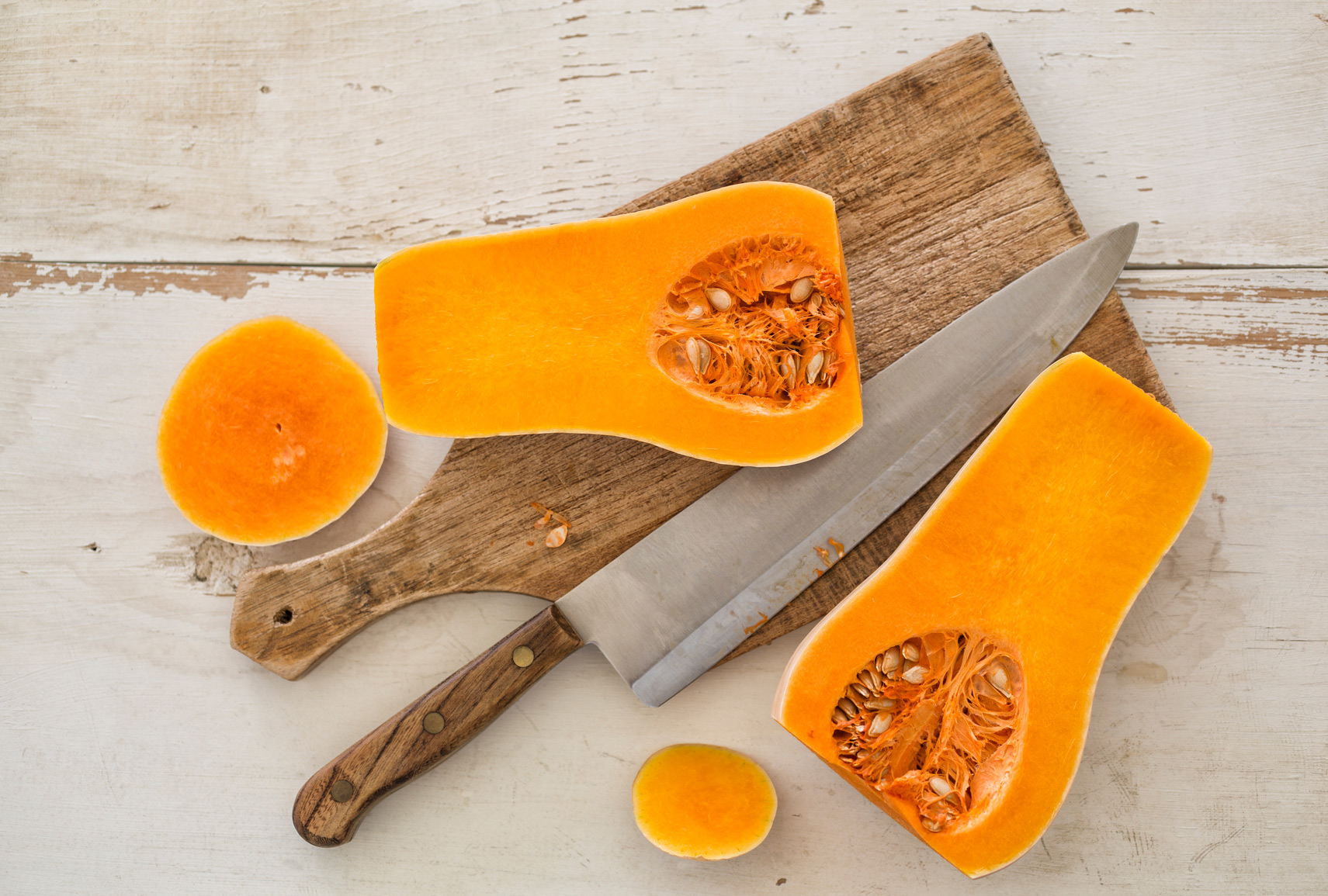Winter squash is nutritious and delicious. Explore the varieties and how to prepare them.
Calling all summer squash lovers! Winter squash is easy to prepare and packs both flavorful and nutritional punch.
Reach for these top five winter squash this season:
1. Acorn : A smaller, acorn-shaped squash with dark green skin and orange-colored patches.
- Boasts a nutty, sweet and peppery taste.
- Ideal for baking.
2. Butternut – A long, pear-shaped, cream-colored squash with deep orange flesh.
- Sweet taste.
- Perfect for roasting, pureeing for soup or paired with a dish that contains apples or black beans.
3. Hubbard – A large, green squash with thick, bumpy skin.
- Able to be mashed easily.
- Try pairing with poultry, pork or eggs, or exchanging with butternut squash in soup.
4. Spaghetti – Yellow-skinned squash with a stringy flesh.
- All inside flesh can be eaten.
- Try topping with pasta sauce and low-fat mozzarella cheese for a nutrient-rich “pasta.”
5. Turban – An unusually-shaped, orange-colored squash with white or green speckles/stripes.
- Contains a nutty flavor similar to acorn squash.
- Ideal for soups and stews.
Availability
Although winter squash is harvested in the fall, it is also available during the cool winter months. Winter squash varieties are typically found year-round at most grocery stores.
Selection
Winter squash should have a deep color, be heavy for their size and free from soft patches, moldy spots or punctured skin.
Preparing
Before cutting and cooking, be sure to rinse winter squash thoroughly under cool water. Do not use soap.
Storing
Unlike their summer cousins, winter squash have a durable peel that is more challenging to peel or cut into, allowing them to be stored longer and making the inside flesh the only edible portion. Store uncut winter squash in a cool, dry place for up to three months. Cut squash should be stored in an airtight container and refrigerated for up to four days. Raw, chopped winter squash, or cooked squash, can be frozen up to 10-12 months.
Nutrition
- Excellent source of Vitamins A & C: Vitamin A is essential for proper eye function, and Vitamin C improves the immune system, aids in wound healing and maintains healthy skin/tissue.
- Delicious source of fiber and complex carbohydrates: Maintains intestinal health, keeps you full for longer and regulates blood-sugar levels.
Cooking
1. Bake: Preheat oven to 350°F. Rinse squash thoroughly under cool water. Cut squash in half, scooping out the seeds and strings. Place in a baking dish, cut side down, cooking until squash is able to be easily pierced with a fork, about 30-45 minutes.
2. Microwave: Rinse squash thoroughly under cool water and pierce the skin multiple times with a fork. Cut squash in half, scooping out the seeds and strings. Pour ¼-inch of water into a microwave-safe dish and place the squash cut side down. Microwave on high for approximately six to seven minutes or until squash is able to be easily pierced with a fork.
3. Steam: Rinse squash thoroughly under cool water. Peel and cut into cubes. Place squash cubes in a steamer basket and steam over boiling water until tender and able to be easily pierced with a fork.
Inspired to use winter squash? Try one of these delicious butternut squash recipes from My Southern Health:

